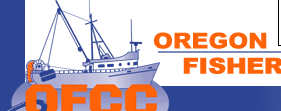| |
PURPOSE OF THESE PROCEDURES
These procedures have been developed by joint committees
of the telecommunications and trawl fishing industries for
trawl fishermen to use as a guide for responsible conduct
when fishing near submarine cables. These procedures are intended
to protect submarine cables from being damaged by contact
with trawl gear. Fishermen who sign agreements with companies
maintaining submarine cables in their area and who follow
these procedures are protected from liability for ordinary
negligence. Participation and compliance also provides for
defined compensation for trawl gear sacrificed to avoid damage
to a submarine cable.
SAFETY FIRST
While cable companies do not encourage trawling over submarine
cables, these procedures define how vessels should operate
when fishing near cables. These procedures do not change the
vessel operator’s authority and responsibility to care
for the safety of crewmembers, passengers, and the vessel,
taking all relevant factors into account. No step
in these procedures should be followed if doing so would be
unsafe.
PROCEDURES TO FOLLOW WHEN OPERATING
NEAR A CABLE
For purposes of these procedures, a vessel is considered
"near" a cable if the distance from the vessel to
the charted position of the cable is equal to or less than:
- 0.6 nautical mile (nm) in depths of 150 fathoms or more, or;
- 0.3 nm, in depths of less than 150 fathoms.
WHENEVER OPERATING "NEAR" A CABLE, A VESSEL MUST COMPLY WITH ALL OF THE FOLLOWING STEPS, 1 THROUGH 7:
- The vessel shall have on board in usable form the most
current nautical chart information, including all of the
following:
- a) an updated NOAA chart (paper or electronic);
- b) any updates from Local Notices to Mariners provided by
a local cable/fisherman liaison committee;
- c) any updates
made available by a local cable/fishermen liaison committee
(the "Committee"), such as information regarding cable burial
status; and
- d) information provided to the vessel by companies
operating submarine cables in the vicinity.
- Anyone acting as helmsman "near" a cable must understand and be able to implement these procedures.
- If a vessel has an electronic plotter or navigation system, the route of the cable shall be displayed on the plotter screen or display. If the vessel has gear on the bottom "near" a cable, the plotter shall be recording the tow.
- When operating "near" a cable, special care should be observed. Gear should not be set or hauled up. Don't make turns of over 90 degrees or do anything that would tend to lay a door down.
- No clam or scallop dredge, anchor, grapple, or other gear designed to significantly penetrate the surface of the seabed should be used "near" a cable. All trawl gear should be in good condition and not have hook points that could snag cables.
- Gear should not be in contact with the seabed over any
location where a cable is reported or known to be unburied.
Vessels shall not tow within a Known Cable Exposure
(KCE) safety zone with gear on the seabed. Vessels shall
not tow within 0.5 nm of scientific instruments in the water
column as provided by a fishing/cable liaison committee.
- The helmsman should closely monitor the groundspeed by the most accurate means available when "near" a cable and monitor the video plotter display for any sign of possible cable contact.
PROCEDURES TO FOLLOW IN CASE OF POSSIBLE
CABLE CONTACT
- In case of any deviation from normal towing conditions, the helmsman (if other than the Captain) shall summon the Captain to the bridge. The Captain of the vessel shall take all appropriate action to keep the vessel safe and to protect the cable.
- If conditions such as reduced speed or course deviation near a cable suggest possible cable contact, the operator shall take the vessel out of gear, if safe and reasonable to do so, or other prudent action to maintain vessel station keeping to minimize potential cable movement.
- No attempt shall be made to free the gear by hauling up the gear or by powering up the vessel without permission of the cable owner's representative.
- The Captain shall call the cable hotline and supply all requested information.
- Vessel shall cut away gear if advised by the cable hotline operator that the location indicates a possible cable contact. The Captain shall call the Committee to arrange for the replacement of gear.
- In any case of a possible or confirmed cable contact, the Captain and helmsman shall file a report with the Committee immediately upon returning to port; preserve all related records (including tow records and plotter records); and cooperate with any investigation by the Committee and/or the cable company.
THESE PROCEDURES ARE
APPLICABLE SHOREWARD OF 2000 METERS WATER DEPTH. FOR INFORMATION
ABOUT AGREEMENTS BETWEEN CABLE COMPANIES AND THE TRAWL FISHING
INDUSTRY CONTACT THE OREGON FISHERMEN'S CABLE COMMITTEE AT
503 325-2285.
|

